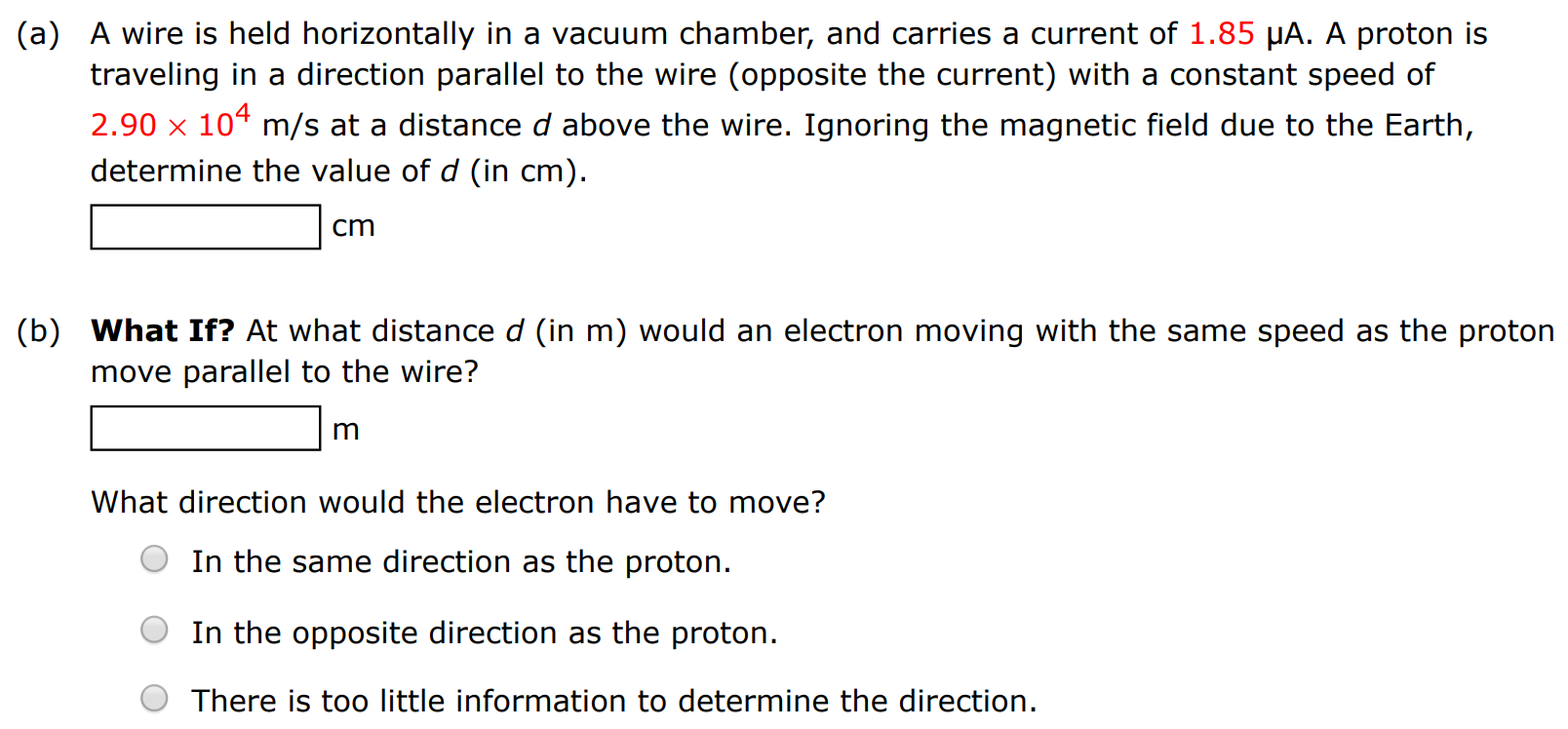(a) A wire is held horizontally in a vacuum chamber, and carries a current of 1.85 μA. A proton is traveling in a direction parallel to the wire (opposite the current) with a constant speed of 2.90×104 m/s at a distance d above the wire. Ignoring the magnetic field due to the Earth, determine the value of d (in cm). cm (b) What If? At what distance d (in m) would an electron moving with the same speed as the proton move parallel to the wire? m What direction would the electron have to move? In the same direction as the proton. In the opposite direction as the proton. There is too little information to determine the direction.
